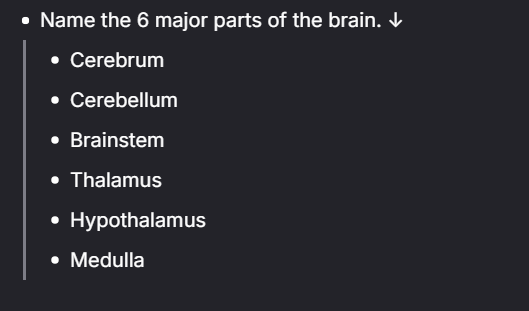functions of parts of the brain
1/11
There's no tags or description
Looks like no tags are added yet.
Name | Mastery | Learn | Test | Matching | Spaced |
|---|
No study sessions yet.
12 Terms
serotonin
A neurotransmitter (that also acts as a hormone) that regulates mood, social behaviour, sleep, digestion and appetite. Mainly located in the digestive system; derived from food such as nuts cheese and red meat.

dopamine
A neurotransmitter that regulates movement and emotional responses and is involved in pleasurable reward and motivation. Deficiencies are linked to Parkinson's disease while high levels are linked to addictive behaviour.
function of thalamus
processes all motor and sensory information (except smell) and carries it to cerebral cortex
function of brain stem
Connects the brain to the spinal cord and also helps regulate vital automatic functions such as breathing and heart rate
function of cerebellum
coordinates voluntary muscle movement, maintaining posture, balance and equilibrium (the ability to maintain orientation of the body and its parts in relation to external space)
medulla
bottom of the brainstem, specifically controls automatic function - e.g., breathing and digestive system
hypothalamus
To maintain constant heart rate, hunger, body temperature, sleep pattern and hormone production, emotions too
cerebrum
responsible for complex functions. it is split into left and right hemispheres which communicate with each other using the corpus callosum, a thick tract of nerve fibres. within the cerebrum, there are frontal parietal temporal and occipital lobes. Outermost layer is called the cerebral cortex
frontal lobe
Higher-level cognitive functions like reasoning, problem solving, emotions and movement.
parietal lobe
manages perception of senses (including taste, pain, pressure, temperature and touch) and spatial arrangement
occipital lobe
responsible for visual perception (seeing) which includes colour recognition, depth perception, motion detection. object and face recognition as well.
temporal lobe
processing sounds, memory, emotions, smell and language comprehension